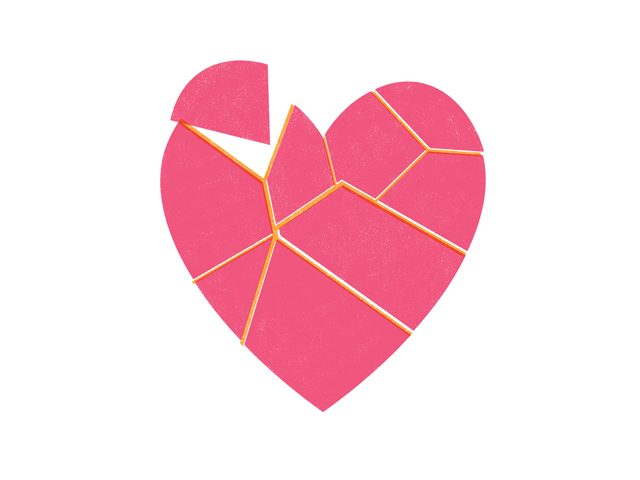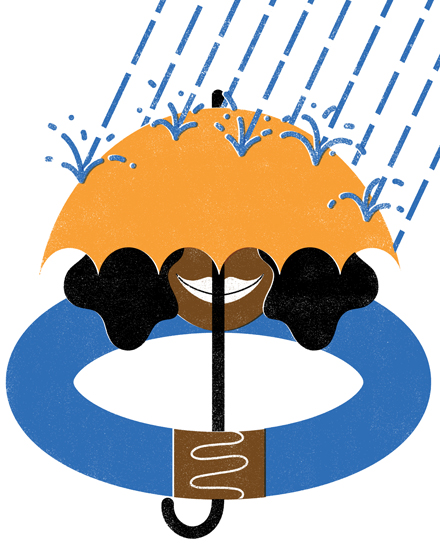Imagining Your Ideal Self
You can spend the rest of your days attempting to become some imagined, perfect person, but I recommend you don’t waste your life striving to become some unattainable version of yourself. You’ll never reach the place of perfection, and that’s perfectly all right. The path to perfection will only lead to exhaustion and disappointment; meanwhile, your actual life will be passing you by. The more peaceful and practical approach is to simply be yourself at every moment, accept that this being human is a messy ordeal, and learn to be OK with getting your hands dirty. There’s no actual happiness to be found in always trying to be someone else at some future time, because the fact is, you’ll never quite get there. Why not instead, show up fully, right here, right now? Allow yourself to let go of the idea that who you are already isn’t enough, and realize this deep acceptance is the path to real freedom.
From A Fool’s Guide to Actual Happiness, by Mark Van Buren © 2018. Reprinted with permission of Wisdom Publications. Mark Van Buren is a Mindful Living trainer and musician. He is the owner and head instructor of Live Free Yoga Studio in River Edge, New Jersey.

Developing Moral Resilience
In these complicated times, we have plenty of opportunities to transform moral suffering into moral resilience, what ethicist Cynda Rushton defines as “the capacity of an individual to restore their integrity in response to moral complexity, confusion, distress, or setbacks.” When we have moral resilience, we are able to stand strong in our integrity, even in the midst of moral adversity.
There is a Japanese practice called kintsukuroi, meaning “golden repair.” Kintsukuroi is the art of repairing broken pottery with powdered gold or platinum mixed with lacquer, so that the repair reflects the history of breakage. The “repaired” object mirrors the fragility and imperfection of life—and also its beauty and strength. The object returns to wholeness, to integrity.
I am not suggesting that we should seek brokenness as a way of gaining strength, although some cultures do pursue crisis in their rites of passage as a way to strengthen character and open the heart. Rather, I am proposing that the wounds and harms that arise from falling over the edge into moral suffering can have positive value under the right circumstances. Moral distress, the pain of moral injury and outrage, and even the numbness of moral apathy can be the means for the “golden repair,” for developing a greater capacity to stand firm in our integrity without being swayed by the wind.
Over my years of traveling to Japan, I have held several of these exquisitely repaired vessels in my hands. I have seen that the “golden repair” is not a hidden repair. It shows clearly the cracked and broken nature of our lives. It combines ordinary stuff and precious metals to repair the crack but not hide it. This, I believe, is how moral transformation happens and integrity opens—not by rejecting suffering but by incorporating the suffering into a stronger material, the material of goodness, so that the broken parts of our nature, our society, and our world can meet in the gold of wholeness.
From Standing at the Edge: Finding Freedom Where Fear and Courage Meet, by Roshi Joan Halifax, PhD © 2018. Reprinted with permission of Flatiron Books. Roshi Joan Halifax is the founder and abbot of Upaya Institute and Zen Center in Santa Fe, New Mexico.

What Not to Give Up
For those of us who engage in rigorous spiritual practice, the journey will often be a negotiation of boundaries. The relief that Buddhist practice brings, after all, is loosening our grasp on the small self; we find that we can separate from our personal views, and this brings tremendous peace of mind. So in the beginning of practice, thrilled by the potential of separating from our ego, many of us are willing to give up large chunks of our personality or identity. And yet, the more we progress down this path, the better we get at understanding when the sacrifices being asked of us are too much, when endurance is hurting rather than helping. We become more skilled at understanding what our best self needs. Paradoxically, we learn that by establishing firm boundaries, we can be more giving and genuinely altruistic.
From Bow First, Ask Questions Later, by Gesshin Claire Greenwood © 2018. Reprinted with permission of Wisdom Publications. Gesshin Claire Greenwood ordained with Seido Suzuki Roshi in 2010 and received dharma transmission in 2015. She is currently a graduate student in East Asian Studies at the University of Southern California.
Being Content with Everything
The Buddhist view of happiness might best be described as contentment. The word contentment describes a state of mind in which we are satisfied with what we have; in which we have dropped our ordinary wishes for this or that and are just focused on what we have to work with in this particular moment. When we are content, we aren’t passive or disengaged with life. We simply appreciate whatever is happening, maintaining acceptance toward all the various situations that life brings. We feel joy, appreciation, gratitude, and connection with ourselves and others. When emotions arise, they help us know ourselves better and see the areas of our personality and character that still need to develop and mature. The emotions are thus a source of information, an inspiration for spiritual growth, and a measure of our own personal development.
From Stop Biting the Tail You’re Chasing: Using Buddhist Mind Training to Free Yourself from Painful Emotional Patterns, by Anyen Rinpoche and Allison Choying Zangmo © 2018. Reprinted with permission of Shambhala Publications. Anyen Rinpoche is a scholar and master of Dzogchen meditation. He is the founder of the Orgyen Khamdroling Center in Denver, Colorado. Allison Choying Zangmo is a longtime student of Anyen Rinpoche’s and is his personal translator.
The Watched Mind Brings Happiness
The restless, agitated mind,
Hard to protect, hard to control,
The sage makes straight,
As a fletcher the shaft of an arrow.
Like a fish out of water,
Thrown on dry ground,
This mind thrashes about,
Trying to escape Mara’s command.
The mind, hard to control,
Flighty—alighting where it wishes—
One does well to tame.
The disciplined mind brings happiness.
The mind, hard to see,
Subtle—alighting where it wishes—
The sage protects.
The watched mind brings happiness.
From The Dhammapada, translated by Gil Fronsdal © 2018. Reprinted with permission of Shambhala Publications. Gil Fronsdal is the primary teacher at Insight Meditation Center in Redwood City, California.
The Buddhist Logic of Rebirth
If we trace mental phenomena back far enough, as in the case of an individual’s life, we come to the first instant of consciousness in this life. Once we have traced its continuum to this point of beginning, we then have three options: We can either say that the first instant of consciousness in this life must come from a preceding instant of consciousness that existed in the previous life. Or we can say that this first instant of consciousness came from nowhere—it just sort of “popped up.” Or we can say that it came from a material cause. From the Buddhist point of view, the last two alternatives are deeply problematic. The Buddhist understanding is that, in terms of its continuum, consciousness or mind is beginningless. Mental phenomena are beginningless. Therefore, the person or the being—which is essentially a designation based on the continuum of the mind—is also devoid of beginning.
From An Introduction to Buddhism: Teachings on the Four Noble Truths, The Eight Verses on Training the Mind, and the Lamp for the Path to Enlightenment, by the Dalai Lama, translated by Geshe Thupten Jinpa © 2018. Reprinted with permission of Shambhala Publications. His Holiness the 14th Dalai Lama, the spiritual head of the Tibetan people, is a Nobel Peace Prize Laureate and the author of over 100 books. Geshe Thupten Jinpa is a Buddhist scholar and the Dalai Lama’s principal English-language interpreter.